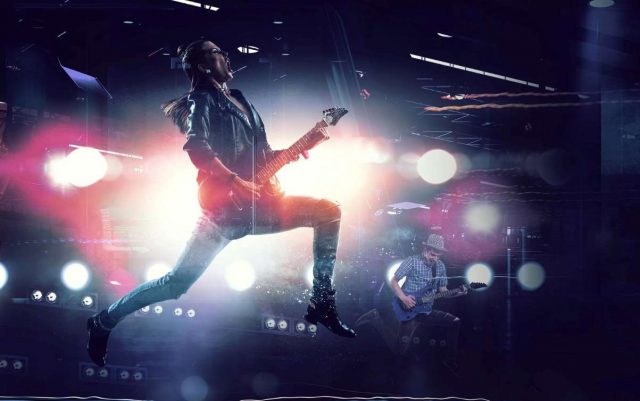In the hot, humid summer of 1969; 500,000 young people from all over the country descended upon a dairy farm in upstate New York for one of the most influential events in music and culture history – the Woodstock Music & Art Fair. More than just an iconic rock concert, Woodstock was a cultural movement that celebrated creativity and togetherness.
Despite the famously chaotic conditions at the event – including thunderstorms, limited food supplies, and overcrowding – it’s remembered fondly as “three days of peace and music” that ushered in a new era of rock music and broader youth culture.
Origins of Woodstock
Woodstock, the iconic music festival near Bethel, New York, in 1969, is one of the defining events of 20th-century popular culture. The festival was organised by four individuals: John Roberts, Joel Rosenman, Artie Kornfeld, and Michael Lang. They initially intended to create a unique concert venue for emerging rock acts in the Catskill Mountains region of upstate New York.
The site chosen for Woodstock was Max Yasgur’s 600-acre dairy farm in Bethel. As word spread about the three-day event, an estimated 550,000 people descended on Max Yasgur’s farm to enjoy performances from artists such as Jimi Hendrix, Janis Joplin, and Santana. Though the organisers had only expected a crowd of around 50,000 people, Woodstock became the defining moment of an era.
The event came to represent the anti-establishment mentality and free-love ethos of the 1960s, as well as peace and unity in times of social upheaval and political unrest. It was also seen as a successful example of how youth culture could collaborate with corporate interests, which led to more mainstream acceptance of rock music in popular culture.
Though little did they know then, Roberts, Rosenman, Kornfeld, and Lang had created a cultural phenomenon that would be remembered for generations.
The lineup and who played
In 1969, the Woodstock Music and Art Festival featured an impressive lineup of 32 musical acts. Some of the most famous performers at the festival included Jimi Hendrix, Janis Joplin, Joan Baez, The Who, Crosby Stills, Nash & Young, Santana, and Sly and the Family Stone. Other notable acts included Joe Cocker, Grateful Dead, Jefferson Airplane, and Creedence Clearwater Revival.
The legacy of Woodstock
The legacy of Woodstock has lived on well beyond its three-day weekend in 1969. The festival became synonymous with the anti-establishment, peace, and love mentality of the 1960s counterculture movement. It also inspired generations of music fans to attend outdoor festivals – a trend that continues today.
The event was also commemorated in books, films, and documentaries, such as Michael Wadleigh’s 1970 documentary Woodstock which won an Academy Award for Best Documentary Feature. In 1994, a 25th-anniversary concert was held at the same site in Bethel, New York, and featured many acts from the original lineup, including Crosby Stills, Nash & Young, Santana, and John Sebastian.
The crowd and the festival experience
The impressive 550,000-strong turnout of people at Woodstock reflected the enthusiasm and optimism surrounding the event. Despite challenging weather conditions and other organisational issues, it is said that there were no reported instances of violence or crime throughout the weekend.
Many concertgoers still recall the positive vibes, community spirit, and unity experienced during Woodstock – an experience that has been immortalised in popular culture ever since.
Aftermath and legacy. It’s no wonder many concert-goers still remember the Woodstock culture as they buy LSD tabs online for concerts today.
The success of Woodstock was a significant turning point in the history of rock music and helped to legitimise it as an art form. It also paved the way for other large-scale music festivals, such as Glastonbury in England and Lollapalooza in the US.
Though Woodstock’s organisers initially faced financial difficulties, they eventually managed to turn a profit from sales of merchandise, as well as money generated from tickets and concessions. In addition, many people have suggested that the event significantly impacted popular culture – something still evident today.
Woodstock today
Though the original Woodstock festival occurred in 1969, its legacy lives on through various reunions and anniversary celebrations. In 2019, a 50th-anniversary concert was held at the Bethel Woods Festival site – which served as the venue for the actual event.
Woodstock’s spirit is still celebrated worldwide today, with numerous music festivals taking inspiration from this iconic event. There are also many museums dedicated to preserving and celebrating its history, such as The Museum at Bethel Woods in New York State – established in 2008 to commemorate the 40th anniversary of Woodstock.
The ultimate message of Woodstock
Woodstock had come to represent a moment when the voice of peace, love, and unity was heard loud and clear. The event’s success showed that it is possible to unite people from all walks of life under one common cause – promoting positivity, understanding, and mutual respect.
Woodstock encapsulated the spirit of the 1960s counterculture movement – delivering a powerful message about freedom, understanding, and acceptance through its music, art, fashion, and attitude. This message still remains today, reminding us that even during times of difficulty or adversity, we can still come together as one global community.


